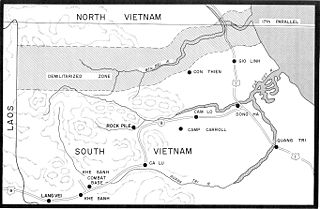The Korea Federation for Environmental Movements (KFEM) is a non-profit organization in South Korea that focuses on environmentalism.

South Korea is a country in East Asia, constituting the southern part of the Korean Peninsula and sharing a land border with North Korea. The name Korea is derived from Goguryeo which was one of the great powers in East Asia during its time, ruling most of the Korean Peninsula, Manchuria, parts of the Russian Far East and Inner Mongolia under Gwanggaeto the Great. Its capital, Seoul, is a major global city and half of South Korea's over 51 million people live in the Seoul Capital Area, the fourth largest metropolitan economy in the world.

Environmentalism or environmental rights is a broad philosophy, ideology, and social movement regarding concerns for environmental protection and improvement of the health of the environment, particularly as the measure for this health seeks to incorporate the impact of changes to the environment on humans, animals, plants and non-living matter. While environmentalism focuses more on the environmental and nature-related aspects of green ideology and politics, ecology combines the ideology of social ecology and environmentalism. Ecology is more commonly used in continental European languages while ‘environmentalism’ is more commonly used in English but the words have slightly different connotations.
Contents
- Activities
- Conservation of the Demilitarized Zone and surrounding area
- River protection
- Wetlands conservation
- Environmental health
- International cooperation
- Policy goals
- Organization
- Citizens' Information Center for Environment (CICE)
- Citizens' Institute for Environmental Studies (CIES)
- Environmental Law Center (ELC)
- ECO Cooperative
- Korea Environmental Education Center (KEEC)
- Monthly magazine Ham-ke-sa-neun-gil
- References
- External links

The group was founded in April 1993 as a federation of eight environmental groups, the largest being the Korean Anti-Pollution Movement Association. With approximately 80,000 individual members and around 50 local offices nationwide, KFEM is the largest environmental NGO in South Korea. Having roots in the Korean struggle for democracy, KFEM acts as a leader for the civil society. It is also the South Korean member of Friends of the Earth International. [1]
Since its founding, the organization has achieved a number of important victories, including stopping harmful projects such as the proposed nuclear waste dump on Gureop Island, a dam construction on the Dong River, and a golf course in the Gaya Mountain National Park. KFEM seeks to raise awareness on a variety of environmental issues and offer a forum for the citizens' concerns. The main activities include campaigns, funding and initiating research projects, organizing protests, and leading nature conservation work. The major campaigns address nuclear energy and the transition to renewable energy, toxic chemicals and air pollution, river protection from large dam construction, wetland and water bird conservation, GMO's, and corporate social responsibility. Further, KFEM focuses on specific issues, such as the conservation of wetlands and biodiversity in the demilitarized zone (DMZ) between South and North Korea. KFEM also develops strategies for sustainable development and energy issues and plays a leading role in the international cooperation with regards to global environmental challenges. [2]

Biodiversity is the variety and variability of life on Earth. Biodiversity is typically a measure of variation at the genetic, species, and ecosystem level. Terrestrial biodiversity is usually greater near the equator, which is the result of the warm climate and high primary productivity. Biodiversity is not distributed evenly on Earth, and is richest in the tropics. These tropical forest ecosystems cover less than 10 percent of earth's surface, and contain about 90 percent of the world's species. Marine biodiversity is usually highest along coasts in the Western Pacific, where sea surface temperature is highest, and in the mid-latitudinal band in all oceans. There are latitudinal gradients in species diversity. Biodiversity generally tends to cluster in hotspots, and has been increasing through time, but will be likely to slow in the future.

A demilitarized zone, DMZ or DZ is an area in which treaties or agreements between nations, military powers or contending groups forbid military installations, activities or personnel. A DMZ often lies along an established frontier or boundary between two or more military powers or alliances. A DMZ may sometimes form a de facto international border, such as the 38th parallel between North and South Korea. Other examples of demilitarized zones are a 120-mile (190 km) wide area between Iraq and Kuwait, Antarctica and outer space.

North Korea, officially the Democratic People's Republic of Korea, is a country in East Asia constituting the northern part of the Korean Peninsula, with Pyongyang the capital and the largest city in the country. To the north and northwest, the country is bordered by China and by Russia along the Amnok and Tumen rivers and to the south it is bordered by South Korea, with the heavily fortified Korean Demilitarized Zone (DMZ) separating the two. Nevertheless, North Korea, like its southern counterpart, claims to be the legitimate government of the entire peninsula and adjacent islands.










